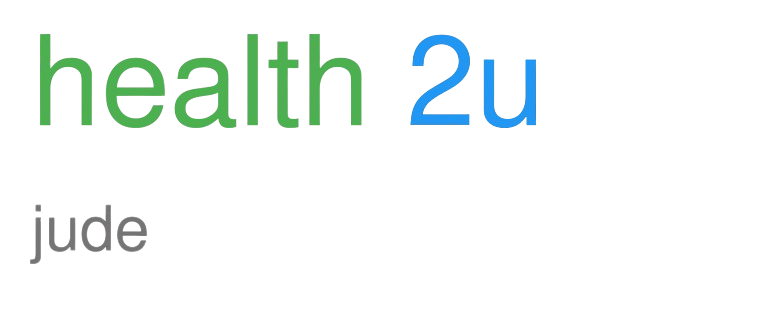Unlock Your Fitness Potential: A Comprehensive Guide
Understanding Your Starting Point: Before embarking on any fitness journey, a thorough self-assessment is crucial. This involves honestly evaluating your current fitness level, identifying your strengths and weaknesses, and acknowledging any pre-existing health conditions. Consider factors like your body composition (body fat percentage, muscle mass), cardiovascular fitness (resting heart rate, endurance), and flexibility. A visit to your doctor for a physical checkup is highly recommended, especially if you have any concerns or haven’t exercised regularly. This ensures you’re starting safely and appropriately. Online fitness assessments, while helpful, shouldn’t replace professional medical advice.
Setting Realistic Goals: Many fitness journeys fail due to unrealistic expectations. Instead of aiming for drastic, immediate changes, focus on setting SMART goals: Specific, Measurable, Achievable, Relevant, and Time-bound. Instead of “getting fit,” aim for “losing 1 pound of fat per week,” or “running a 5k in under 30 minutes by [date]”. Break down large goals into smaller, manageable milestones. This prevents feeling overwhelmed and provides consistent positive reinforcement. Celebrate each achievement to maintain motivation.
Choosing the Right Exercise Program: The ideal fitness program is personalized to your individual needs and goals. Consider your preferences – do you enjoy team sports, individual activities, or working out in a gym? Explore various options:
-
Cardiovascular Training: Improves heart health, burns calories, and boosts endurance. Activities include running, swimming, cycling, and brisk walking. Aim for at least 150 minutes of moderate-intensity or 75 minutes of vigorous-intensity cardio per week.
-
Strength Training: Builds muscle mass, increases metabolism, and improves bone density. Incorporate exercises targeting all major muscle groups, using weights, resistance bands, or bodyweight. Aim for at least two sessions per week, focusing on proper form to prevent injuries.
-
Flexibility and Mobility Training: Improves range of motion, reduces risk of injury, and enhances performance. Incorporate stretching (static and dynamic) and mobility exercises like yoga or Pilates. Regular flexibility training should be a part of your routine.
-
High-Intensity Interval Training (HIIT): Involves short bursts of intense exercise followed by brief recovery periods. Highly effective for improving cardiovascular fitness and burning calories in a shorter timeframe. However, it’s important to start slowly and gradually increase intensity.
Nutrition for Optimal Performance: Exercise alone won’t yield optimal results without proper nutrition. Focus on a balanced diet rich in whole, unprocessed foods:
-
Protein: Essential for muscle repair and growth. Good sources include lean meats, poultry, fish, eggs, beans, and lentils.
-
Carbohydrates: Provide energy for workouts. Choose complex carbohydrates like whole grains, fruits, and vegetables over refined carbohydrates.
-
Healthy Fats: Crucial for hormone production and overall health. Good sources include avocados, nuts, seeds, and olive oil.
-
Hydration: Drink plenty of water throughout the day, especially before, during, and after workouts. Dehydration can significantly impact performance and recovery.
-
Calorie Management: For weight loss, you need to create a calorie deficit. This can be achieved through a combination of exercise and dietary adjustments. Consult a registered dietitian or nutritionist for personalized guidance.
Monitoring Progress and Making Adjustments: Regularly track your progress to stay motivated and identify areas for improvement. Keep a fitness journal, use wearable fitness trackers, or take progress photos. If you’re not seeing the results you want, don’t be afraid to adjust your program. This might involve changing your workout routine, adjusting your diet, or seeking guidance from a fitness professional.
Rest and Recovery: Rest is just as important as exercise. Allow your body adequate time to recover between workouts. Aim for at least 7-8 hours of sleep per night. Overtraining can lead to injuries and burnout. Incorporate rest days into your weekly schedule. Listen to your body and take rest days when needed.
Seeking Professional Guidance: While self-guided fitness programs can be effective, seeking professional guidance can significantly enhance your results and reduce the risk of injury. Consider working with a certified personal trainer, registered dietitian, or physical therapist. They can provide personalized plans, correct your form, and offer support and accountability. A professional can adapt your plan as you progress, preventing plateaus and ensuring continuous improvement.
Staying Motivated and Consistent: Consistency is key to achieving long-term fitness goals. Find activities you enjoy to make exercise a sustainable part of your lifestyle. Consider working out with a friend or joining a fitness group for added motivation and accountability. Reward yourself for achieving milestones, but focus on intrinsic rewards like improved health and well-being rather than solely external rewards. Remember that setbacks are normal; the key is to learn from them and keep moving forward. Visualize your goals and remind yourself of the reasons why you started your fitness journey.
Utilizing Technology and Resources: Numerous apps, websites, and wearable devices can help you track your progress, find workout ideas, and stay motivated. Explore options like fitness trackers, calorie-counting apps, and online workout platforms. However, remember that technology is a tool to supplement your efforts, not replace them. Focus on building sustainable habits and creating a holistic approach to fitness.
Addressing Common Challenges: Plateaus, injuries, and lack of motivation are common challenges faced during a fitness journey. Consult a professional for advice on overcoming plateaus and managing injuries. Find ways to stay motivated, like setting new goals, trying new activities, or finding a workout buddy. Remember that fitness is a marathon, not a sprint. Celebrate small victories and focus on the long-term benefits of a healthy lifestyle. Your fitness journey should be enjoyable and sustainable; adapt and evolve your strategy to fit your needs and preferences over time.





